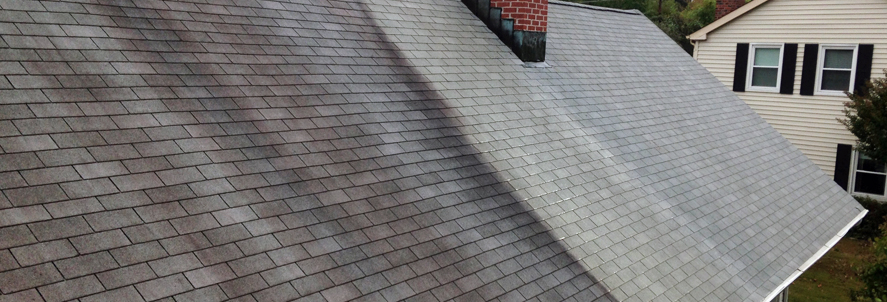
Power Washing | Soft Washing | HybridWash!

Roof Fungus
What are those ugly stains on my roof?
Gloeocapsa magma is a species of cyanobacteria. Cyanobacteria are an ancient line of photosynthesizing bacteria, which photolyze water generating oxygen gas. Ancient cyanobacteria were ancestral to the chloroplasts of all plants on earth. Gloeocapsa magma has gained notoriety in the Southeastern U.S. which is quickly spreading throughout the Midwest. This particular type of cyanobacteria is responsible for creating the unattractive black roof stains and/or streaks commonly noticed by many. The bacteria accumulate over time; this accumulation begins to show the problematic black stains as the cyanobacteria develop their dark and hard UV-protective outer coating.
The main reasons for the rapid spread and notice ability of these cyanobacteria are thought to be:
- Rising humidity and temperatures combined with more and more bacteria spores promotes their spread with these favorable conditions.
- Fiberglass shingles (the most commonly seen amongst today's residential homes) have been being made with limestone as filler (in the asphalt). These shingles hold moisture and organic "bacteria food" material longer (especially on the North-side in the Midwest) than the paper/asphalt/ceramic shingles of 20+ years ago. Additionally, these particular algae enjoy the limestone as a food source.
Once the bacteria have become noticeable, the stains will continue to worsen year to year. There is debate over the actual harmfulness of these particular bacteria to roofs, as there is little supportive scientific research. However, most "experts" within the subject area conclude the bacteria to be harmful, if left untreated, as the growth holds moisture within shingles causing premature aging, rotting, and/or granule loss.
Note: Gloeocapsa magma may resemble "algae" in that they are green, but in fact cyanobacteria are bacteria whereas algae are single-celled eukaryotes (cells with nuclei) that are closely related to plants.
Yes, we can bring our own water!



